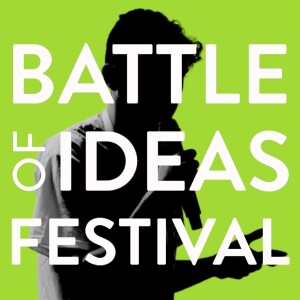
Recorded at the Battle of Ideas festival 2023 on Saturday 28 October at Church House, London.
ORIGINAL INTRODUCTION
The worlds of art and entertainment are wrestling with, and reeling from, the opportunities and challenges posed by ‘generative’ AI – tools that can generate seemingly unique, bespoke creations in response to ‘prompts’ submitted in plain language. Such technology is now having a dramatic impact on almost every profession or art form that involves static or moving images, written or spoken words, sound, music or programming code.
Everything from the fantastical to the photorealistic is affected. AI can generate convincing ‘photos’ of people who have never actually existed, and can create ‘deepfakes’ so good that public figures – whether living or long deceased – can now be ‘filmed’ saying and doing completely invented things. Indeed, a key concern behind this year’s high-profile Hollywood strikes is actors fearing that they will be imitated and replaced by AI creations – losing control of their likenesses not just during their lifetimes, but also after their deaths.
Otherworldly images are no less affected by AI. Polish illustrator Greg Rutkowski – who has made a career out of depicting dragons and fantastical battles – recently found himself demoted (or promoted, depending on one’s perspective) from popular artist to one of the world’s most popular AI prompts, beating Michelangelo and Picasso. The internet is now swamped with AI recreations of Rutkowski’s once distinctive style, while the artist’s own livelihood – and recognition for work that is genuinely his – are in jeopardy.
There are many such examples, spanning different forms of creativity. Some are trying to take a stand against these trends, but solidarity between professions is wanting. Major publishers, including Bloomsbury Books, have recently issued apologies, when it was discovered that they were using AI-generated art on their book covers. Some soundtrack composers – who were already complaining about being reduced to poorly paid, interchangeable and uncredited ‘ghost composers’ in the content-hungry age of streaming – now fear being replaced by machines altogether.
Some creators insist that their consent should have been sought before their work was included in the vast datasets on which AI has been trained. Some are seeking the removal of their work from such datasets even now, although the path from machine learning to AI creations is so intricate that this may be the practical equivalent of trying to unbake a cake. Others, by contrast, revel in the new creative possibilities arising from AI, and approach the technology as an enormous and exciting artistic toolkit.
Who will prevail? And what will be the consequences?
SPEAKERS
Dr JJ Charlesworth
art critic; editor, ArtReview
Vivek Haria
composer, London Symphony Orchestra, Birmingham Contemporary Music Group and Piatti Quartet; writer on art, technology and culture
Rosie Kay
dancer; choreographer; CEO and artistic director, K2CO LTD; founder, Freedom in the Arts
Dr Hamish Todd
mathematician; videogame programmer; creator, Virus, the Beauty of the Beast
CHAIR
Sandy Starr
deputy director, Progress Educational Trust; author, AI: Separating Man from Machine
No comments yet. Be the first to say something!